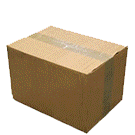Week 12Assignment: add an output device to a microcontroller board you've designed and program it to do something
Programs/Machines: Barduino
Lessons Learned:
For this exercise I am using the same board that I used for Input Devices: a Barduino. Here is a link describing the process of milling and programming the that board. I'm using serial communication to connect my Barduino to the Arduino IDE platform using FTDI cables which communicate to the board with RX and TX pinouts.
I decided to use this opportunity to work with two components that I'm envisioning using for my final project: a buzzer and a LED. The electronics housed in these balloons will intensify the sway of the breeze through gradually increasing sound and light. Looking into buzzers, I became aware of passive and active buzzers and settled on a passive buzzer in order to better control the sound rather than have it operate as an on/off switch. I bought an Octopus passive buzzer from, Diatronic, a local electronics store, for only a few euros and got to understanding the principles. I connected the passive buzzer to the signal, ground and VCC and the attached a resistor to the LED which is connected to a digital pin. To program the board, I had fun controlling the pitch of the buzzer and brightness of the LED using pulse-width modulation to vary the frequency.
I decided to use this opportunity to work with two components that I'm envisioning using for my final project: a buzzer and a LED. The electronics housed in these balloons will intensify the sway of the breeze through gradually increasing sound and light. Looking into buzzers, I became aware of passive and active buzzers and settled on a passive buzzer in order to better control the sound rather than have it operate as an on/off switch. I bought an Octopus passive buzzer from, Diatronic, a local electronics store, for only a few euros and got to understanding the principles. I connected the passive buzzer to the signal, ground and VCC and the attached a resistor to the LED which is connected to a digital pin. To program the board, I had fun controlling the pitch of the buzzer and brightness of the LED using pulse-width modulation to vary the frequency.
Downloads
